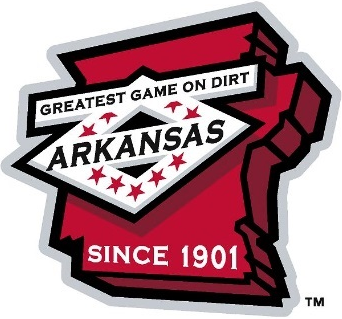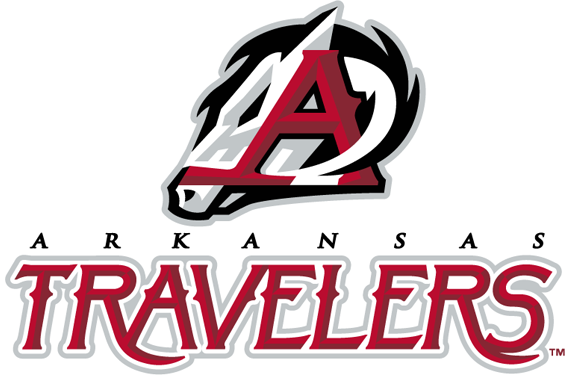There are two versions of the mid-1800s legend of a minstrel who gets lost in rural Arkansas and stumbles across a squatter playing a never-ending tune on a fiddle. The first is told by Arkansans themselves, and has its roots in a tale told by Colonel Sanford Faulkner, an important figure in the state’s early history. Faulkner sang the story of losing his way and asking directions at a log home. In exchange for showing the fiddler how to finish his interminable tune, Faulkner was offered hospitality and the only dry spot under the cabin’s leaky roof. It’s a story that’s meant to celebrate Arkansas’s diversity and the warmth of its people.
A second version of the story was performed around the same time by Mose Case of Buffalo, New York. While the basic story remains the same, Case’s version paints an unflattering picture of the local population and ends by saying that the traveler “has never had the courage to visit Arkansas since.”

In spite of a widely circulated version of the story that basically portrays them as hillbillies, the people of Arkansas reclaimed the legend and embraced the traveler as a symbol of their state. “The Arkansas Traveler became a catch-all phrase for almost anything or anyone from Arkansas,” according to an article on the Encyclopedia of Arkansas. “The term found itself as simply a name on riverboat, racehorse, newspaper, and newspaper column, as well as a nickname for any number of people from Arkansas.”
One of Arkansas’s many cultural institutions named for the traveler dates back more than a century—minor league baseball’s Arkansas Travelers. Born in 1901 as the Little Rock Travelers, the team is the poster child for longevity.
“It’s pretty cool that the Travs have never taken a different nickname dating back to 1901,” said the team’s Director of Broadcasting & Media Relations Robbie Aaron. “There have only been seven seasons since 1901 when there’s not been a team, obviously because of the war. Every other season there’s been either the Arkansas Travelers or the Little Rock Travelers baseball.”
Not only that, but the team has played in only three stadiums in their entire history. They’ll celebrate a decade in their current home, Dickey Stephens Park, in 2016, but 10 years is kind of a drop in the bucket of the team’s history. “If you think about it, 10 years in this ballpark seems so significant, but there’s over 100 years of Travelers baseball before that,” Aaron said. “You’re talking about over 100, almost 115 years now of Travelers baseball playing in only three fields. That’s amazing.”
The Travelers have a unique claim to fame in their name. When they switched from the Little Rock Travelers to the Arkansas Travelers in 1961, they became the first professional sports team named for a state instead of a city.
The team’s current logo, created by Brandiose in 2014, focuses more on the traveler’s ride than the traveler himself. “When they said ‘Travelers,’ they said, ‘What can we associate with Travelers?’” Aaron said. “Well, he’s on a horse, it’s perfect.”
 The 2014 update to the Travelers’ logo was a welcome relief, as it replaced one of minor league baseball’s blandest and most reviled. The team’s previous primary logo, which was designed by an intern at the Little Rock Department of Motor Vehicles (probably), was once voted one of baseball’s 50 worst.
The 2014 update to the Travelers’ logo was a welcome relief, as it replaced one of minor league baseball’s blandest and most reviled. The team’s previous primary logo, which was designed by an intern at the Little Rock Department of Motor Vehicles (probably), was once voted one of baseball’s 50 worst.

Another of the team’s previous logos plays on a different definition of Traveler—the name of Robert E. Lee’s horse. With the Arkansas state flag replete with Confederate symbolism and a tie to a Confederate general in the Travelers’ past, the 2014 brand update endeavored to link several meanings of the term traveler.
“There’s a visual language that’s very Confederate, and so you have a horse, you have this flag,” Klein said. “There was a question of how do we reimagine this idea and celebrate everything?”
 The new identity took the various meanings behind the term traveler and wrapped them up in a look that reflects the architecture in Little Rock. “It’s the capital and everything is chiseled out of this rock,” Klein said. “We had this idea of, we like the horse—there weren’t a whole lot of horse mascots in minor league baseball that were dominant—the Robert E. Lee thing’s probably not a great thing to hang our hat on, but maybe we can take this horse concept and evolve it. What if the horse is chiseled out of limestone?”
The new identity took the various meanings behind the term traveler and wrapped them up in a look that reflects the architecture in Little Rock. “It’s the capital and everything is chiseled out of this rock,” Klein said. “We had this idea of, we like the horse—there weren’t a whole lot of horse mascots in minor league baseball that were dominant—the Robert E. Lee thing’s probably not a great thing to hang our hat on, but maybe we can take this horse concept and evolve it. What if the horse is chiseled out of limestone?”
The foundation in stone is a theme that carries throughout the new identity. “We realized this idea of the capital, and might, and chiseling the horse,” Klein said. “[Brandiose partner] Casey [White] was really up for doing something that was not typical Brandiose that you come to expect from us.”
 What baseball fans HAVE come to expect from Brandiose is character-based logos, and when it came to the Travelers, Jason and Casey couldn’t resist themselves.
What baseball fans HAVE come to expect from Brandiose is character-based logos, and when it came to the Travelers, Jason and Casey couldn’t resist themselves.
As Robbie Aaron puts it, “The biggest crowd reaction has come from the secondary mascot, which has nothing to do with the Arkansas Travelers, but more of the area. It’s a swamp possum named Otey.”
Just as the legend of the traveler can be seen two ways, Otey plays off the image outsiders might have of Arkansas. “Here’s this swamp possum, it was a little tongue in cheek—stereotyped, but in a fun kind of way,” Klein said.
As with all things related to minor league baseball logos, the reaction from locals was hesitant at first. “That first time they unveiled Otey,” Aaron said, “there was this big uproar and outcry in the community of what the heck is a swamp possum? Now everyone loves it. It’s turned into this great, lovable, ugly mascot to the point where we’re doing a bobblehead night this year and people are begging to know what date this bobblehead is going to be.”
From the mid-1800s legend of a lost minstrel to a Confederate general’s horse to a hillbilly possum, the identity of Little Rock’s baseball team has embraced local lore. Over more than a century of baseball, the Travelers’ identity has collected layers of meaning like sediment settling on the bottom of a swamp.






